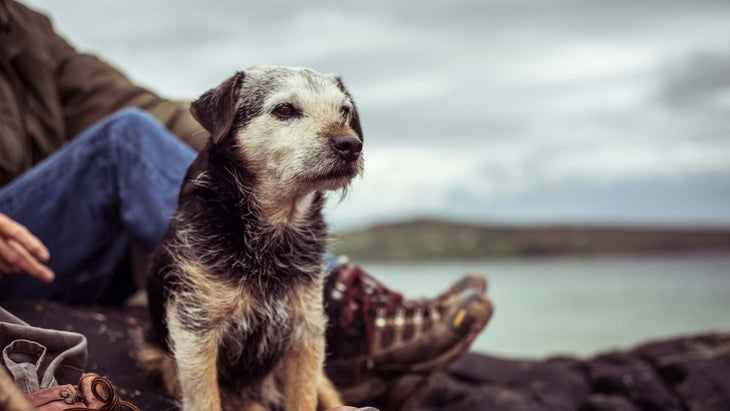Products You May Like
Dogs are the best hiking buddies. Let’s count the reasons: They don’t complain, they can carry their own pack, they won’t make you listen to their bad guitar playing around the campfire, and they won’t make you feel guilty for eating the last bar.
Inevitably, however, our canine companions will slow down before we do, leaving us to determine the best balance between getting our dogs out to do what they love while also keeping them comfortable and safe. So how do you adjust for the limitations of aging in an old friend?
While not the only culprit behind their gradual slow down, arthritis is a common ailment in older dogs that you need to take into consideration when deciding what your dog can handle
“Obviously for hiking, good mobility is a foremost concern,” says Dr. Taylor P. Ludwick of Bishop Veterinary Hospital. “Luckily there are lots of options when your dog starts to hurt,” which could be as early as age seven for some dogs.
“Osteoarthritis is inevitable in any aged pet and often manifests as soreness after exercise, or difficulty rising from a resting position,” Ludwick adds. “While arthritis is not reversible, there are many medical treatments to slow the progression and alleviate the pain.”
Beyond giving her medication, the most important thing you can do for your senior pooch is to be sensitive to her needs. As the owner of a 12-and-a-half-year-old Malamute who still has the desire to get out there, here are some things I have found to be successful.
First, follow Fido’s lead and stop and smell the roses. When your dog was a puppy he would probably cover twice as much ground as you did running up and down the trail with frantic joy. These days, you might notice that he meanders along, stopping to take it all in (and probably catch his breath a little). Let him dictate the pace.
Plan hikes with lots of water sources (streams, lakes, etc.) along the way. Standing in a cold stream for a few minutes may make her sore joints feel a little better.

Choose shorter, more gradual hikes, and consider shorter loops rather than long out and backs. This way if Fido does tucker out and you have to carry him, you know just how far it is to get back to the trailhead. Pick terrain that is easy to moderate, and when hiking with a group, don’t be afraid to let the others go on ahead if you notice that your dog needs to slow down.
Hike when it is cool outside, either in the morning or the evening, but try to avoid the midday heat. Just like people, older dogs, especially those with a heavy coat, may be more affected by extreme temperatures.
Take off the pack. The lighter your dog is along the trail, the less stress on her joints and the happier she will be. This can also be said for your dog’s weight in general. Keeping your dog on the slimmer side puts less stress on her body and helps prolong mobility.
Allow more recovery time in between hikes. Your dog may not have the boundless energy he had as a puppy and may need an extra day or befor he’s ready to get moving again. You can still go on overnight hikes with your dog, you just may need to plan to spend an extra night in the wilderness to give him time to recover.
If your dog does suffer from arthritis and is on medication, make sure you time their treatments so they’re enjoying the full effect when you get to the trailhead. (Ask your veterinarian how to do this.)
“It should be clear that there are many successful arthritis treatments available in veterinary medicine today that can make a great impact on the health and activity of your pet,” Ludwick says, adding that one colleague of his believes dogs are living longer than ever due to their active lifestyles, enabled by arthritis treatments.
Allowing and encouraging your dog to move is a critical component of keeping him healthy in his old age. So don’t leave your old dog home when you hit the trail. Instead, plan the hike around him even if that means going a little slower and easier than you’re used to. Trust us: He’ll be happy you’re taking him along.
Originally published in 2017; last updated 2022
